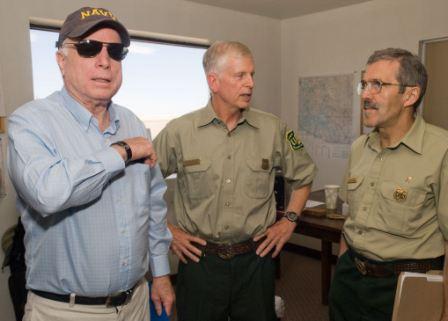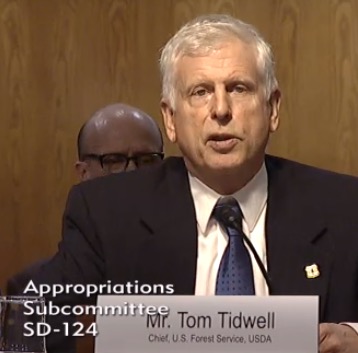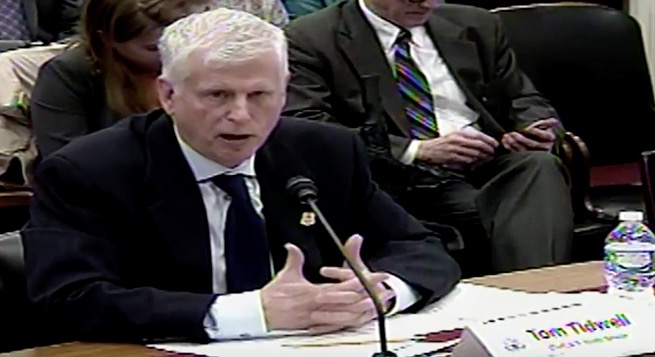(Originally published at 5:58 p.m. MDT August 21, 2017)
Tom Tidwell, the 17th Chief of the U.S. Forest Service, sent an email to all agency employees August 18 announcing that he was leaving his position, calling it stepping down. In a tweet sent out the same day the new Secretary of Agriculture, Sonny Perdue, wished him well in his retirement.
Grateful for Chief Tidwell’s dedicated service & leadership with the @forestservice. We all wish him well on his retirement from @USDA. pic.twitter.com/IfreoWId3r
— Sec. Sonny Perdue (@SecretarySonny) August 18, 2017
In the photo above, Secretary Perdue is second from left and Chief Tidwell is third from the right. It looks like they are all outfitted for a smokejumper ridealong except for the Chief.
It is not surprising that Chief Tidwell is out, or will be on September 1. He was in the position for most of the Obama administration and the new regime is generally not fond of keeping anything or anybody around that reminds them of the former president. This is common; Chief Tidwell replaced Gail Kimbell who served for two years as Chief when George W. Bush was President.

The conventional wisdom is that the Forest Service Chief is one of the last remaining “career”, non-political, Senior Executive Service Agency Administrators leading a large Federal agency, but in recent years it has been handled politically. The folks currently in the White House thumb their nose at conventional wisdom or standard issue politics, so it would not be surprising to see a new Chief selected from private industry with little or no Forest Service experience. Especially after a large number of recent hires from outside the government and lobbyist groups in the Department of the Interior.

However two names that have been mentioned, Michael Rains and Lyle Laverty, have both spent time in the USFS. Mr. Laverty, not exactly shy about expressing his career goals, wrote an article that was published 11 days after our current President was inaugurated, titled, “If I were Chief of the Forest Service…” There is word on the street that the names of one or two retired USFS Regional Foresters have also been mentioned.
The position is not subject to confirmation by the Senate, so it is up to the discretion of the Secretary of Agriculture, or his boss, to fill the job.
Below is an excerpt from Chief Tidwell’s all employees message:
…We have lived through some tough days responding to natural disasters and dangers that come from keeping citizens safe. We have been called to respond in a way that only the Forest Service can. We have grieved together, far too many times, for those who have lost their lives in support of our mission. By far these have been the most trying times for me. But I was always grateful for how you showed up to respect the sacrifices of others, to lend your support for grieving families, friends and co-workers, to help them begin healing from their loss. That, along with your commitment to our safety journey, to do what we can to ensure everyone returns home safely every day, is what carried me through those times. I know you will continue our progress on this never-ending Journey.
When I think about our mission and how emphasis may shift over time, one constant anchor remains: land stewardship and service to all people. We must live up to the responsibility to restore and sustain our nation’s forests and grasslands and ensure future generations inherit the same opportunities to receive the benefits many Americans often take for granted. The clean air, clean water, the biodiversity, the wildlife and fisheries habitat, the recreational settings and the economic activity that are essential to America…
****
(Hours after we posted this article we found out that Tony Tooke has been selected to replace Tom Tidwell as Chief of the Forest Service.)
Thanks and a tip of the hat go out to Chris and Allen.
Typos or errors, report them HERE.



